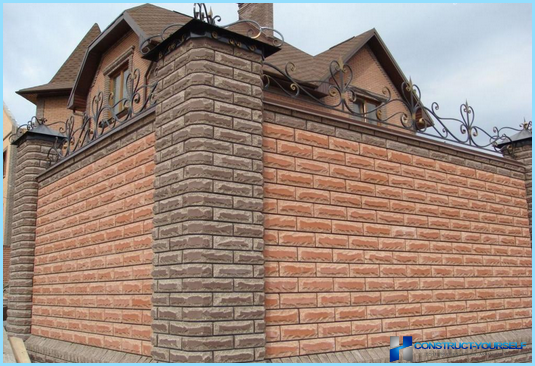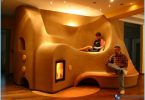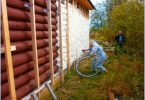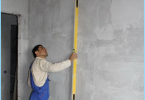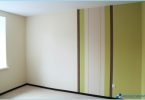Bricklaying is always performed with observance of certain rules. The most important thing in the process is a strength. Several different types of putting some bricks. Each species has its own peculiarities and subtleties that need to be considered in the construction of a building or structure.
The types of bricks used in the construction ↑
To date, industry has produced a large number of different types of bricks. Each of them is applicable at various construction sites. You must know the main points to choose one or the other material and get to work.
The brick can be solid, produced by plastic extrusion. This type of material is quite dense, durable and resistant to low temperatures in winter time, and also resistant to moisture and not subject to deformation under extreme conditions.
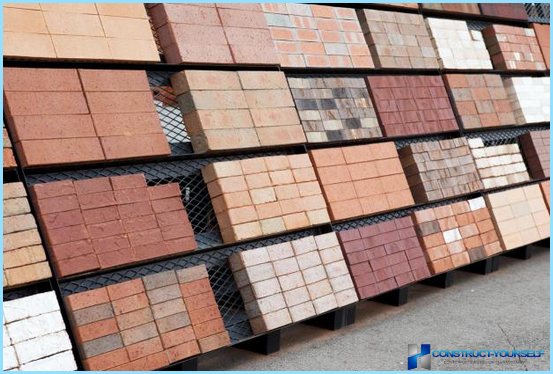
All these features due to its indispensability, the construction of buildings and structures, heavy workload and also for use in flooded soils. In addition, this type of bricks used for masonry furnace.
Also very often used in practice, hollow brick. It is used in the construction of flue work, walls and parts of the structure underground type.
In addition to hollow bricks, used in the construction of porous hollow look. These types are very often used in the construction of walls of various buildings or structures.
Due to the fact that in this type of bricks there are internal voids, it has good characteristics, namely: teplotechna (an important condition for the construction of a building or structure in the further operation), as well as the weight much less than other classification of bricks.
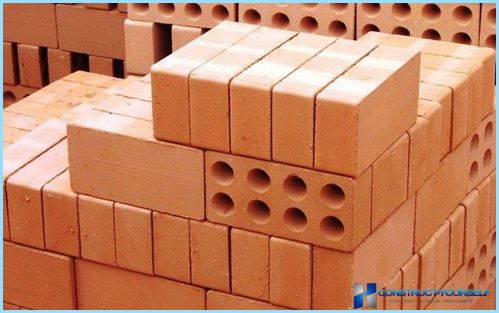
Principal masonry ↑
Professional builders, in the construction of walls, using different types of masonry bricks. After analyzing, we can understand that each has found its application in construction. Consider in more detail each type.
Solid masonry ↑
This type is a monolithic structure. The width of this design is equal to half a standard brick. The mechanism of masonry of this type is carried by the outer face of the wall-to-build structures. Each received a number of builders called the mile, and filling formed between the back filling. The choice of solid masonry, the bricks will be laid without the formation of various kinds of cracks and insulation. In this situation, the wall structure will be made only of brick and mortar. Most often, this variant stacking is applicable in the construction of load-bearing walls, and installation when insulation works are performed outside. The insulation may be made from other, different ways.
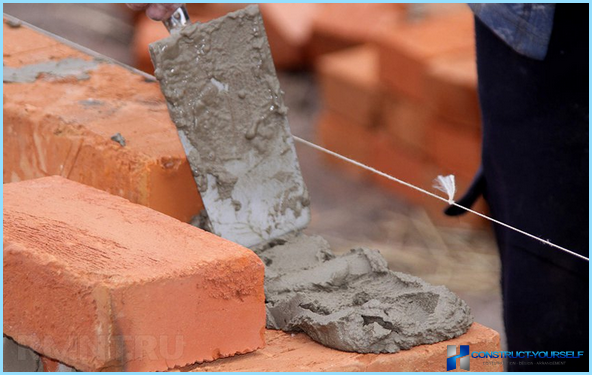
Solid brick laying, for bandaging of seams can be single-row or multi-row. But it is worth noting that the pillars and the possible piers are placed in three rows, not less. If by laying structures that do not have heavy loads, it is best to apply in the brick battle. If by means of a continuous stacking of the Assembly of the flue opening, is it recommended to take pre-burnt brick. Existing seams of the channels you need to handle clay. When laying brick solid type, used exclusively plastic composition solutions.
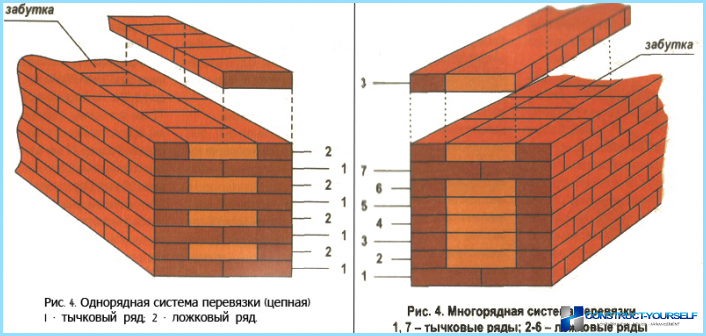
Lightweight masonry ↑
This type is used in the construction of low-rise jobs. The main essence of this masonry is that built two walls, with a width of half a standard brick, which are generally located parallel relative to each other. You use only whole bricks. Insulation made of special insulating materials.
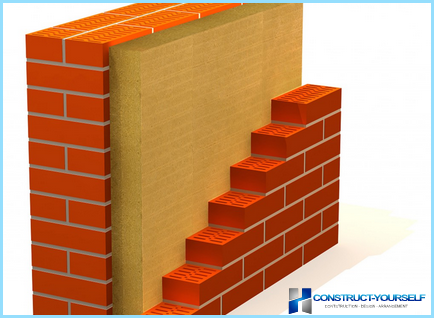
Lightweight masonry was introduced to construction in order to build the walls thinner, but still have their heat-insulating property.
Quite often, lightweight masonry used in the construction of structures with the presence of existing internal insulation. Masonry is made using only the warm solution. It adds any kind of sand, porous in its composition. This mixture is another opportunity to do the walls thinner at the expense of increased heat resistance.
Walls can be built on the basis of porous-hollow or hollow, and also ceramic bricks. Lightweight form involves pointing existing masonry joints of the brick on the entire surface of the facade.
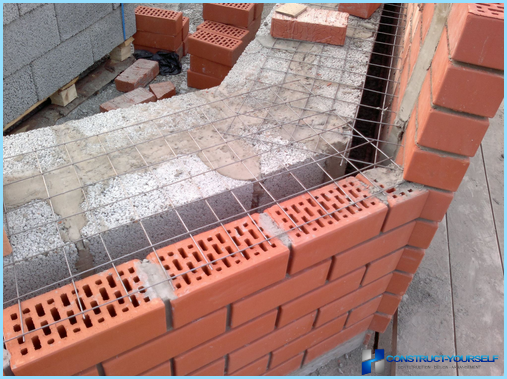
Reinforced masonry ↑
Masonry reinforced type is quite often used in construction to the construction of particular structures, which have a very high load. The valve itself is in the seams in horizontal or vertical position. The amount of the thickness of the joint must be thicker in comparison with the diameter of the rod. There are different types of laying a brick wall, based on the reinforcement, for example Gothic or Dutch. If the reinforcement is made transversely, it is best to use a metal grid with different shapes. To lay such a mesh should not be very often, sufficient spacing will be every 3-5 series of brick laying.
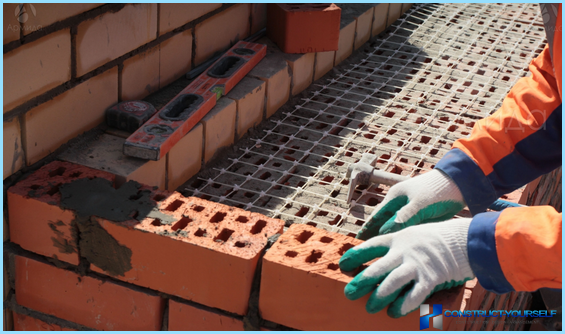
Reinforced masonry is primarily a way to build sustainable and durable wall. Especially when it is planned the construction of any structure with a sufficiently large load. The essence of all the works on the construction of reinforced masonry is to ensure that the existing seams laid steel reinforcement. This material is good in its composition and very good adhesion to the mortar, due to this, the masonry work is solid. Lay rebar either along or across. After your rods are firmly secured in the seams, they will take some of the load on its basis. In addition, using reinforced stacking can realize any solution that does not meet the General standards.
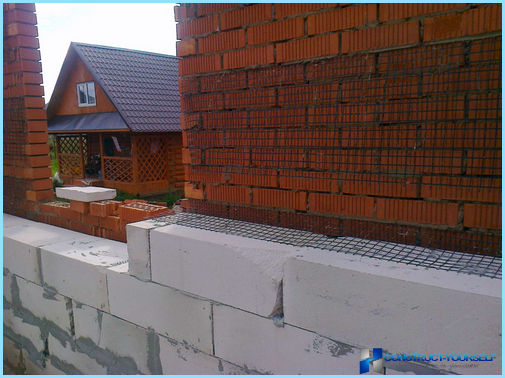
The basic patterns of laying brick ↑
To increase the strength of masonry is necessary to perform the ligation of the longitudinal, vertical and transversal seams. All the basic schemes and methods are used not only to whole bricks, but some parts, halves or quarters. For the manufacture of odd-shaped bricks used in the hammer-pick. These partial shape of the bricks always fit the chip inside the stonework, to the whole party looked only to the outside wall.
Longitudinal seams are joints located on the horizontal walls. Tying such joints is extremely important and necessary, in order to evenly distribute the entire load that may occur on the surface of the entire width of the wall. Also, the dressing does not allow a laying of a brick to split into more thin, individual layers.
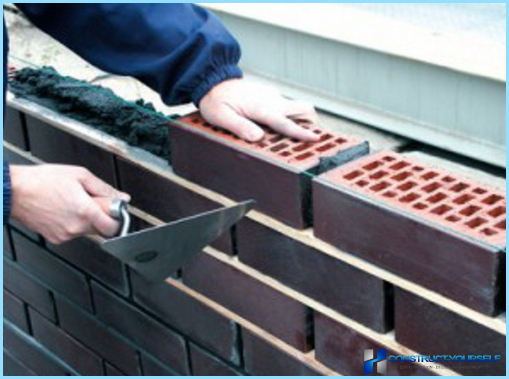
Dressing is performed by rows, which are laid out transversely to the direction of the main walls. These ranks are called bonder. Their laying is carried out based one bonder for four-five rows of ordinary styling.
Transverse and vertical seams are the seams located between the bricks in masonry. Their dressing is essential to building walls, giving it solidity. The ligation of the transverse seam is done using stretcher bond series.
In addition, there are other options for building a house or building made of brick, and the ligation of the transverse joints do tychkovymi by numbers. In the construction of transverse joints very often bind both ways. But the vertical joints separately, as a rule, do not bind. Their ligation, with proper stonework, obtained automatically.
If the corners of the brick house, kicked ahead of masonry walls, any error that occurred in the execution of works with application of selected methods of ligation, can lead to cracks in the wall, no matter which way the masonry is made.
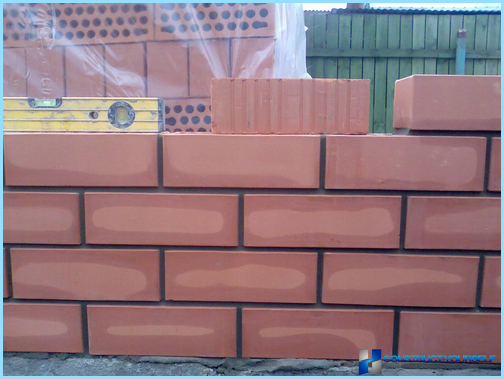
Materials and equipment for bricklaying ↑
Depending on what function will be to perform a walls, use solid or hollow bricks. You can also use clay or sand-lime bricks.
For construction of brick masonry using cement, lime, and sometimes a combined version of the cement-lime mortar. It can be prepared in both his hands, and buy in DIY stores. Introducing into the solution a small amount of lime or clay can improve not only ductility of the composition, but also to ensure the strength of the solution.
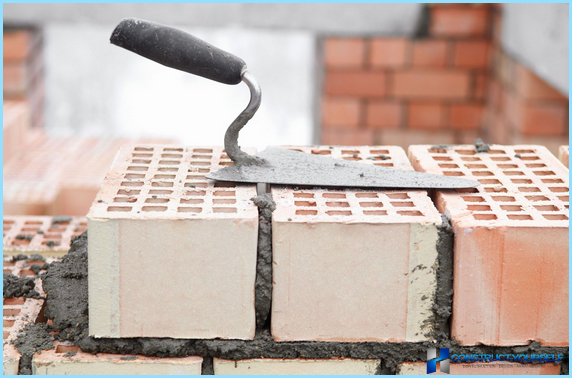
To mix the components of the mixture in a dry condition, manually or using mixer. After thorough mixing, the dry mixture gradually add water to achieve particular concentrations of the solution at which it will have sufficient plasticity, but it will retain the shape and will not spread.
For walls with your own hands, you will need a special tool for bricklaying:
- the container in which the prepared solution. Well, if it’s a mixer;
- the container in which migrated solution;
- trowel;
- monofilament of nylon (implementation of secure the borders of the spread of brick row);
- building level;
- pointing;
- the lining that control the ranks of masonry;
- plumb. A special device for laying bricks, controlling any deviations in the masonry from vertical;
- gon. The device controlling the geometry of the corners of the building;
- template for bricklaying, controlling the thickness of the seams;
- kirk;
- mallet;
- gloves.
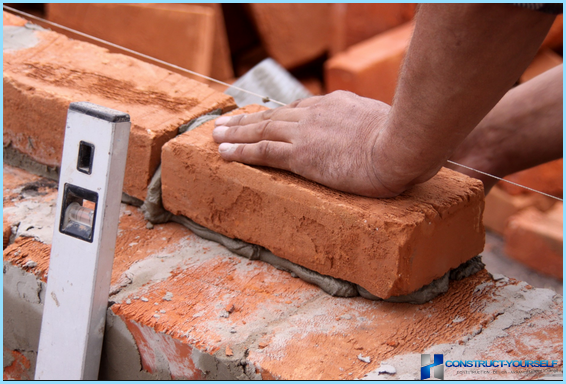
Conclusion ↑
Implementation of and compliance with all rules guarantees long service life and safety of any structures. And built with his own hands a brick wall will become a real pride of any Builder.
Learn more about how to build a brick wall with their hands will know in the next video

